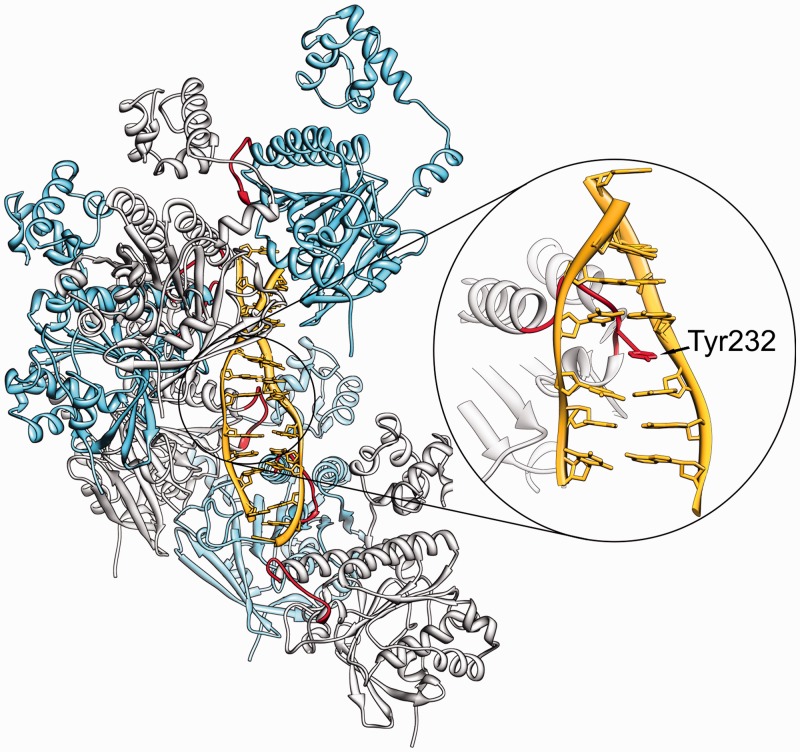Figure 4.
A model of Rad51-dsDNA filaments explaining how the intercalation of Tyr232 into the DNA can critically regulate the structure and stability of Rad51-DNA complexes. Earlier studies provided the evidence that Tyr232 from L1 loop of Rad51 intercalates into the bound DNA and this process is implicated in DNA stretching (29,30). Because DNA intercalation necessitates DNA unwinding, the impediment of DNA rotation by magnetic beads or by covalent closure permits only formation of non-stretched filaments. If the DNA is free to rotate and the L1 loop is in a favourable orientation as in Rad51 in the ATP-bound state, the complexes reach the stretched form of high stability. Once the Tyr232 is intercalated, it can be retracted from the DNA on ATP hydrolysis or on rewinding of the DNA. However, in the presence of Ca2+, the intercalation is so stable that DNA rewinding to natural helicity is not able to expel the intercalated Tyr232 from the DNA.

